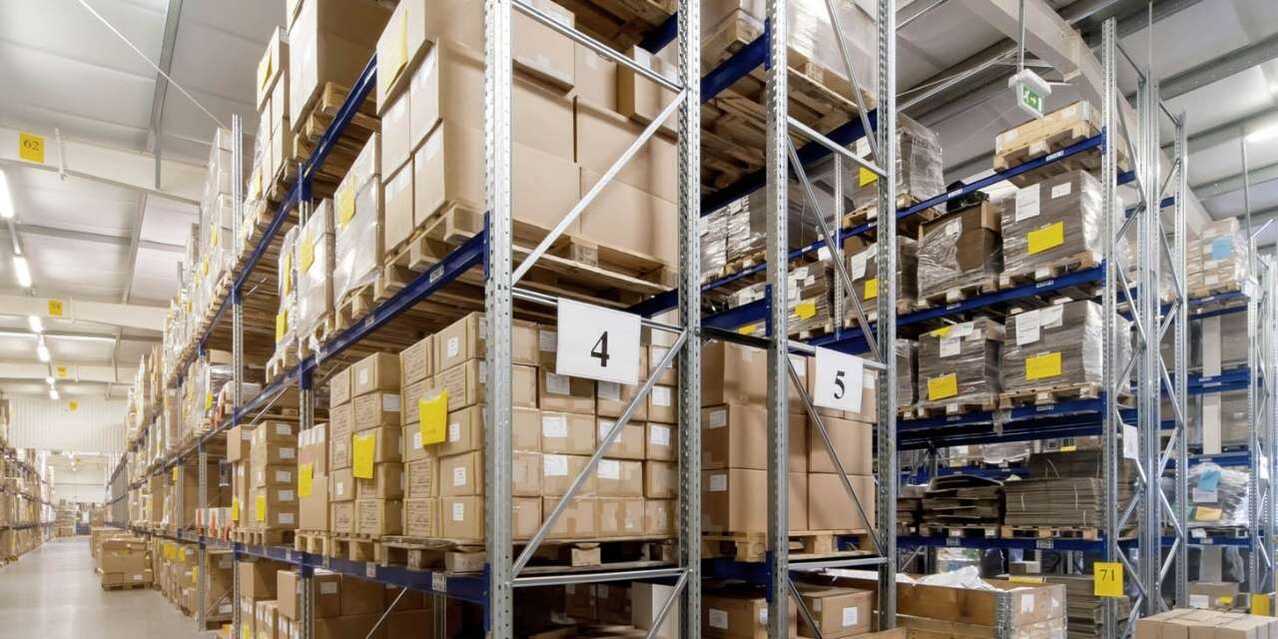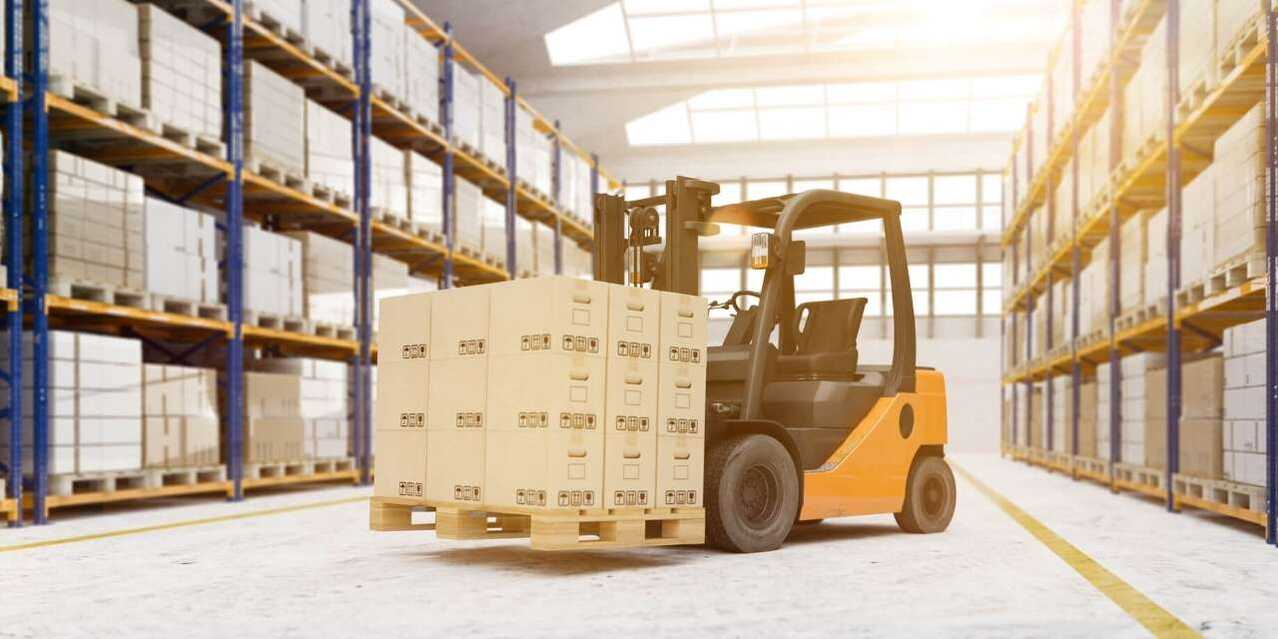The management and organisation of stocks is an essential lever for the smooth running of a warehouse and the traceability of your products: the entire supply chain depends on it.It is therefore necessary to have a good knowledge of the basics of storage in a logistics warehouse, in order to gain in operational efficiency and choose the best method for your logistics activities.This article was updated in December 2020
- The basic rules for an optimal logistics warehouse
- What types of handling to choose?
- Warehouse space management
the basic rules for an optimal logistics warehouse
Logistics professionals have categorised storage methods according to the type of products (perishable, cold, etc.) and the sales dynamics of the products. Here we give you the main categories.
Mastering the ABC storage method
The ABC method is a stock management method often found in warehouses. The idea is to categorise goods in order of importance and divide them into items of categories A, B and C
- A-goods are valuable goods;
- B-goods are those of average value;
- C-goods are the lowest value goods.
this division of products allows you to know which goods are the most important in your stock. How to set it up? The storage of your A, B, C goods in a logistics warehouse must respect a few rules so that you can gain efficiency throughout your supply chain, from the storage phase to the packaging of your products
- Store your A-goods in the middle of your shelf space and close to your goods receipts and issues;
- B and C goods can be placed in the surrounding shelves, which are sometimes less accessible.
this will allow you to reach your most requested goods more easily in order to gain in productivity while improving your flow of goods

Optimising storage space
How to optimise your storage space to facilitate the logistics flow? It is important tomanage the available space while keeping a handling set for your teams, which can vary according to the characteristics of the products
- For your archives: the clearance should be almost zero to optimise logistic storage;
- For manual handling: a side clearance (L) and top clearance (H) of a few centimetres is sufficient for gripping the goods;
- If you use handling equipment: a side clearance of 75 mm and a top clearance of 100 mm.

La gestion des flux logistiques : les systèmes LIFO et FIFO
Il existe deux méthodes principales pour gérer le stockage des produits à l’arrivée et à la sortie.
Le principe du système FIFO
Le principe FIFO (First in – First out) est simple : la marchandise est chargée d’un côté du système de rayonnage, puis prélevée de l’autre.
Cette méthode consiste à prélever des marchandises du stock en suivant l’ordre d’arrivée chronologique, ce qui évite de perdre des produits alimentaires périssables, par exemple. Ce système dynamique permet également une manutention en double accès, à l’entrée et la sortie des stocks. Pratique pour donner aisément accès à vos colis prêts pour la livraison à vos transporteurs !
Le principe du système LIFO
À l’inverse du FIFO, le LIFO (Last In First Out) fonctionne ainsi : le dernier produit entré est le premier sorti de votre stock.
Cette méthode marche sur le principe de l’empilement et ne
nécessit
- Handling with arms (a method to be avoided, as there are many risks for the staff and the goods);
- Manual push carts: “I go to the product “;
- On-station assembly using a storage device;
- Dynamic racking and conveying: the “product comes to me”.
automatic handling
There are many ways of automating handling. It is possible to use
- Pallet trucks, stackers;
- A front-end forklift (pallet front pick-up);
- A three-way truck (90° pallet grip);
- Special trucks (carpets, boats, turning);
- A “small train” truck.
 Manual, semi-automatic or automatic, which is the most efficient palletising method?
Manual, semi-automatic or automatic, which is the most efficient palletising method?
- Manual palletising consists of placing the products/crates on the pallet and then wrapping it by hand to ensure the stability and solidarity of the whole. Carried out by man, this method requires very strenuous physical movements and is therefore not highly recommended.
- Semi-automatic palletising is carried out by an automatic palletiser controlled by the human hand.
- Automatic palletising is self-contained and the palletiser will carry out the palletising process with little or no human intervention. This increases efficiency and reduces the risk of Musculoskeletal Disorders on your logistics platform.
warehouse
space management
What are the different storage solutions available and how do you choose the most appropriate storage method for your warehouseand logistics business?
For manual handling with low turnover
In the case of manual handling that requires few rotations, you can opt for these three systems
- Storage on shelves in aisles;
- Storage on manual mobile shelving and with a steering wheel;
- Mass storage on pallets.
for manual handling with high turnover
In the case of manual handling such as picking, you have different storage options
- Storage on aisle shelving;
- Dynamic storage on rails for on-the-job assembly;
- Level storage on circulation aisles;
- Level storage on a single level;
- Level storage on mezzanines.
for mechanical handling with machines
In the case of automatic handling, machines open up new possibilities for storage systems
- Storage on pallet collars: ideal for highly seasonal products requiring seasonal supplies;
- Storage on aisle racks;
- High bay storage: very suitable for narrow aisles;
- LIFO or FIFO accumulation storage – a common type of storage used for beverages;
- Mobile base storage: a costly solution and more suitable for cold stores.
how to choose the right storage racking?
a a complete guide to choosing the right racking here are the 3 points to remember
- For light products: epoxy steel shelving: ideal for light storage such as archives, files, etc.
- For semi-heavy products: galvanised steel shelving can support up to 170 kg per shelf.
- For heavy products: the chipboard tray, which is ultra-strong with large storage dimensions, or the pallet racking, which is 3 m high and specially designed for storing pallets.
once you have established your needs, depending on the nature of your goods, the turnover rate of your goods and the handling system, you can decide on the basis on which your storage will be based. It is also advisable to inform your employees of the rules in place in the warehouse in order to guarantee an efficient and serene logistical flow, from the storage to the delivery of your packages
The 3 key points to remember:
- Mastering the ABC method will allow you to better understand your goods and to adapt your storage accordingly;
- Optimising your company’s logistics can also be achieved through product arrival and departure systems, known as LIFO and FIFO;
- Finally, to master the basics of storage, you need to study your type of handling and the different storage modes that are related to it.
so, are you ready to optimise your transport and logistics strategy with an optimal storage method for better warehouse management?















